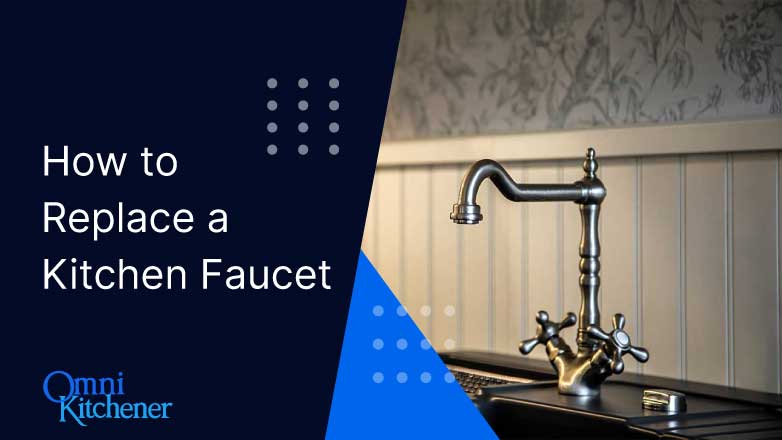Replacing a Kitchen Faucet can always seem complicated at first glance but it’s not as hard as one might think. With the right equipment and a bit of instruction, you can do it at home just by yourself!
And that is what we are here for, to instruct you on how to replace your Kitchen Faucet.
Why you might need to replace a Kitchen Faucet?
First, let’s get into why you would need to have a new kitchen faucet. There are several reasons why you might need to replace a Kitchen Faucet but the most common reason is that it’s old or faulty or just both.
In which case you’d want to change it to a new and better faucet, a more fashionable one even.
What equipments to get and what to do before you start?
It’s always a good idea to get the necessary equipment from a hardware shop before you start. Chances are, you might need to make a few errands to the hardware shop on the process if you’re not ready.
Rest assured, we will list the things you will need so, you don’t end up running back and forth!
- Supply tubes: You need to measure the size of the existing supply tube and buy a new one, a stainless-sleeved supply tube preferably.
- Basing Wrench: Without much explanation, it is obvious that this little fellow will come in handy a lot to get your job done.
- A flashlight: If there’s no work light since the area around the sink can be dark and hard to see without a source illuminating it.
- And of course, A new faucet: Beware, before you buy a new faucet, look at how many holes there are in the sink in the distance in between the center of the left-most hole to the center of the right-most hole. This method of measuring is called On Center (OC). It’s called the Industry standard for measuring sinks’ holes. With that, you can easily buy a perfect match.
Replacing your Kitchen Faucet.
Before you start, make sure to shut off the water. How to do that? It’s very simple actually. Rotate the on/off valves placed on the hot and cold water supply lines to “OFF” should work. But in some cases, the valve might be stuck or rusty and won’t budge no matter how hard you try. In that case, applying heat using a hairdryer will loosen it and you should be able to move it.
You can also use a lock-plier to grab and gently twist the valve. But it’s better to turn off the home’s main water valve as there is a chance you may break it.
Now, to begin what we’ve come here to do. Replacing the old Faucet comes in two steps. The first is removing the old faucet and the second is installing the new one. Let’s get started
1. Removing old faucet.
- Cut the old plastic sprayer line from the Faucet by using a pair of snips or a scissor. Unscrew and cut the plastic nut first if your faucet has a separate sprayer attached.
- Disconnect the water supply in the Faucet.
- Carefully loosen the nut under the sink that holds the faucet in place and slowly pull out the old faucet.
- Once the water is turned off, supply lines are disconnected and old faucet is pulled out, you are ready to go and install the new Faucet.
2. Installing a new faucet.
- It’s best to look at the instruction manual that came with the faucet for the proper assembly of your new faucet.
- You have to place the rubber or plastic gasket over the faucet holes in the sink so that you can set the deck properly.
- Put the faucet line into the holes.
- If your faucet is a pull-down faucet, you have to connect the supply pipe to the quick-connect hose.
- Connect all the lines properly. Check if there are any leaks, if necessary, use tape.
- Remove the aerator carefully and let the water run free for a few minutes. It will clear the lines.
- Install the aerator again once you’re done. Check for any kind of leaks for the last time and readjust if needed.
When you should stop and call a plumber?
We’ve said before that replacing a kitchen faucet is an easy task but it can seldom go out of hand. A simple task for a plumber can become a headache for you if you don’t know when to step down and give the task to a professional.
- If the area beneath the sink is too dense and you can’t fit your body there to reach the nuts then you should not force your way in. Just call a plumber and they will know what to do.
- If you need to remove additional plumbing such as sink drain trap or garbage disposal then it’s better to call a plumber to do the job. Unless you have experience in doing plumbing-related stuff before, you most likely won’t be able to do it.
That’s all for today. Hope we were able to help. Have a good plumbing experience .



